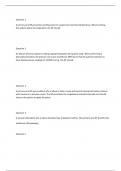Samenvatting
Criminal behavior during the lifecourse - samenvatting literatuur + hoorcolleges
Dit is een samenvatting van alle hoorcolleges en verplichte literatuur van het vak criminal behavior during the lifecourse van de uu. Daarnaast zijn een nog belangrijke aantekeningen van de werkgroepen toegevoegd.
[Meer zien]






